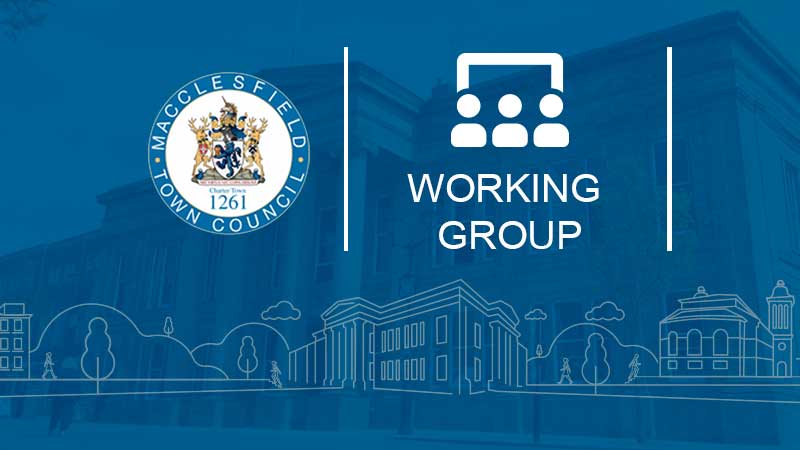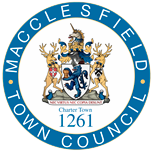
Planning Policy Consultation Working Group
Macclesfield Town Council
Planning Policy Consultation Working Group Agenda 15th March 2021
Due to the Coronavirus Covid-19 restrictions and in line with the Local Authorities and Police and Crime Panels (Coronavirus) (Flexibility of Local Authority and Police and Crime Panel Meetings) (England and Wales) Regulations 2020 this meeting will be held remotely.
Agenda for the meeting on 15th March 2021 at 10am.
1. Election of Chair and Vice Chair
1.1 Elect Chair
1.2 Elect Vice Chair
2. Background
3. Governance
3.1 Agree Terms of Reference
4. National Planning Policy Framework and National Model Design Code Consultation
Action: To consider a response to the consultation
5. Date/Time and Place of Next Meeting
To be advised.
The format/venue to be confirmed subject to C-19 restrictions and related regulations.
Macclesfield Town Council
Planning Policy Consultation Working Group Minutes 15th March 2021
Due to the Coronavirus Covid-19 restrictions and in line with the Local Authorities and Police and Crime Panels (Coronavirus) (Flexibility of Local Authority and Police and Crime Panel Meetings) (England and Wales) Regulations 2020 this meeting was held remotely.
Minutes of the meeting held on 15th March 2021 at 10am.
In attendance:
- Cllr Mike Hutchison
- Cllr Janet Jackson MBE
- Cllr Fiona Wilson
1. Election of Chair and Vice Chair
1.1 Elect Chair
RESOLVED: That Cllr Hutchison is elected as Chair
1.2 Elect Vice Chair
RESOLVED: That Cllr Wilson is elected as Vice Chair
2. Background
At the Planning Committee meeting on 26/02/21, it was resolved that a Working Group is established to respond to future planning consultations.
Currently, the Ministry of Housing, Communities and Local Government is consulting on the draft text of the revised National Planning Policy Framework and seeking views on the draft National Model Design Code.
3. Governance
3.1 Terms of Reference
The Terms of Reference were agreed.
4. National Planning Policy Framework and National Model Design Code Consultation
RESOLVED: That the following response to the consultation is returned and ratified at the next available Planning Committee meeting.
Chapter 2: Achieving sustainable development
Q1. Do you agree with the changes proposed in Chapter 2?
Request an amendment to paragraph 8b:
A social objective – to support strong, vibrant, and healthy communities, by ensuring that a sufficient number and range of homes, including affordable homes, can be provided to meet the needs…
Chapter 3: Plan-making
Q2: Do you agree with the changes proposed in Chapter 3?
Disagree with the addition of text to paragraph 22:
“Where larger-scale development such as new settlements form part of the strategy for the area, policies should be set within a vision that looks further ahead (at least 30 years), to take into account the likely timescale for delivery.”
This will have an impact on land prices and reduce the viability of affordable housing in new developments.
Chapter 4: Decision making
Q3: Do you agree with the changes proposed in Chapter 4? Which option relating to change of use to residential do you prefer and why?
Disagree with the new text in paragraph 53, and express concern on how the new criteria can be applied. Article 4s should continue to be limited to situations where necessary to support local amenities and wellbeing of an area, and in particular to protect communities from the proliferation of HMOs which can have a negative impact in a local area.
Paragraph 59 – request “They should consider publishing a local enforcement plan to manage enforcement proactively, in a way that is appropriate to their area” is amended to;
“They should publish a local enforcement plan to manage enforcement proactively, in a way that is appropriate to their area.”
We have seen the cumulative detrimental effect on our town centre conservation area of uPVC window installations, satellite dishes and unsympathetic shop frontages that could have been prevented with proactive enforcement measures.
Chapter 5: Delivering a wide choice of high quality homes
Q4: Do you agree with the changes proposed in Chapter 5?
Paragraph 63 – remove b) so that affordable housing is prioritised.
Chapter 8: Promoting healthy and safe communities
Q5: Do you agree with the changes proposed in Chapter 8?
No comments
Chapter 9: Promoting sustainable transport
Q6: Do you agree with the changes proposed in Chapter 9?
No comments
Chapter 11: Making effective use of land
Q7: Do you agree with the changes proposed in Chapter 11?
No comments
Chapter 12: Achieving well-designed places
Q8: Do you agree with the changes proposed in Chapter 12?
Paragraph 126 – retain existing wording. Parish/town councils are comprised of elected members and represent the community. Neighbourhood groups risk undermining this important planning function.
Paragraph 127 – retain existing wording. If a neighbourhood plan has a policy on design or develops a design code, this should be the standard against which design will be measured in that area.
Paragraph 128 – don’t agree. As above, if a neighbourhood plan has a policy on design or develops a design code, this should be the standard against which design will be measured in that area.
Paragraph 130 is welcomed. Macclesfield Town Council is actively seeking opportunities for planting trees in the town.
Chapter 13: Protecting the Green Belt
Q9: Do you agree with the changes proposed in Chapter 13?
No comments
Chapter 14: Meeting the challenge of climate change, flooding and coastal change
Q10: Do you agree with the changes proposed in Chapter 14?
No comments
Chapter 15: Conserving and enhancing the natural environment
Q11: Do you agree with the changes proposed in Chapter 15?
No comments
Chapter 16: Conserving and enhancing the historic environment
Q12. Do you agree with the changes proposed in Chapter 16?
No comments
Chapter 17: Facilitating the sustainable use of minerals
Q13. Do you agree with the changes proposed in Chapter 17?
National Model Design Code
No comments
Q14. Do you have any comments on the changes to the glossary?
No comments
Q15. We would be grateful for your views on the National Model Design Code, in terms of:
a) the content of the guidance
b) the application and use of the guidance
c) the approach to community engagement.
No comments
Public Sector Equality Duty
Q16. We would be grateful for your comments on any potential impacts under the Public Sector Equality Duty.
Reducing the cost of land will increase affordability. Development should reflect the needs in society and provide safe homes that promote health and wellbeing with a residential mix. At least 30% of homes should be affordable and distributed, as too rented properties, throughout a development site to prevent a cluster of housing types that may foster perceptions of inequality between residents of diverse economic means.
There is real concern that offsetting affordable houses to alternate sites dedicated for this market will lead to an extreme sense of inequality and discrimination, with the potential for such areas to decline and impact negatively on residents’ health and wellbeing.
There should be a focus on homes for life so people may feel connected to their community, instilling a sense of civic pride and community cohesion. Affordability could aid the ambition of greater integration.
New homes must meet high environmental standards such as electric charging points, low energy boilers and insulation to future proof the world in a time when climate emergencies have been declared by many councils. The health and wellbeing of future generations is dependent on responsible and decisive action now.
Larger developments in particular should have a responsibility to ensure there is no detrimental impact to existing services and infrastructure (health service, education, transport) that may indirectly discriminate against minority groups. This can be achieved through CIL or S106 injections or the development providing its own services, providing there is a sustainable infrastructure link to the town centre and the development does not divert footfall from the town centre.
5. Date/Time and Place of Next Meeting
To be advised.
The format/venue to be confirmed subject to C-19 restrictions and related regulations.
Meeting closed at 11.22am
Chair: Cllr Mike Hutchison
Clerk: Harriet Worrell
